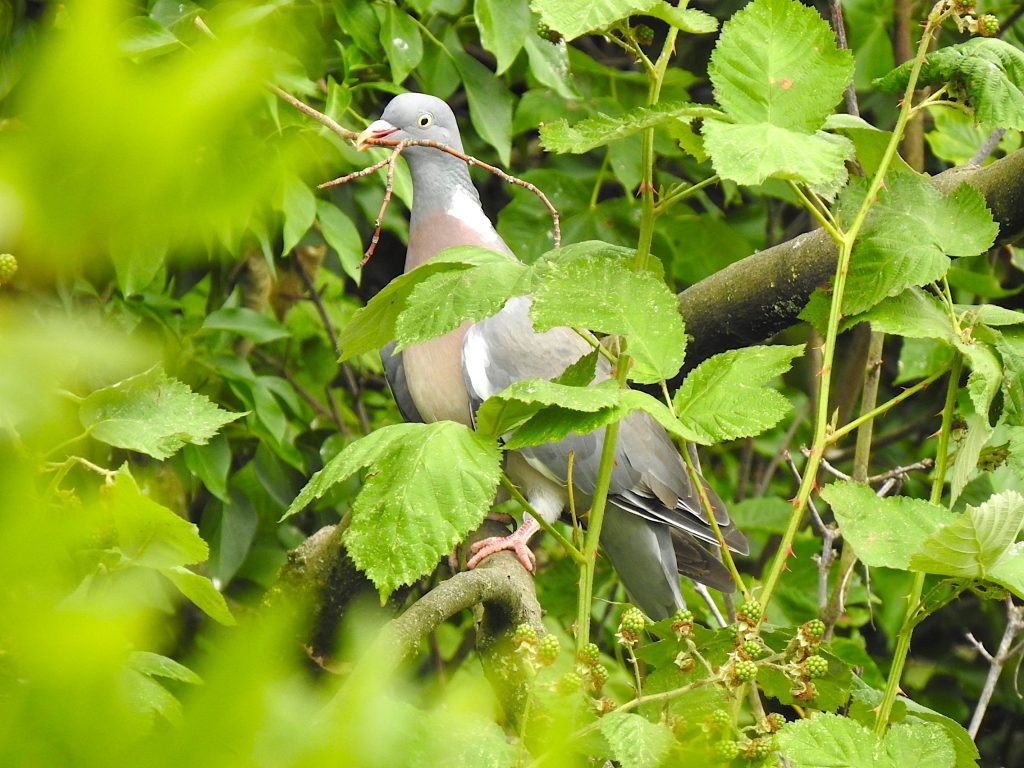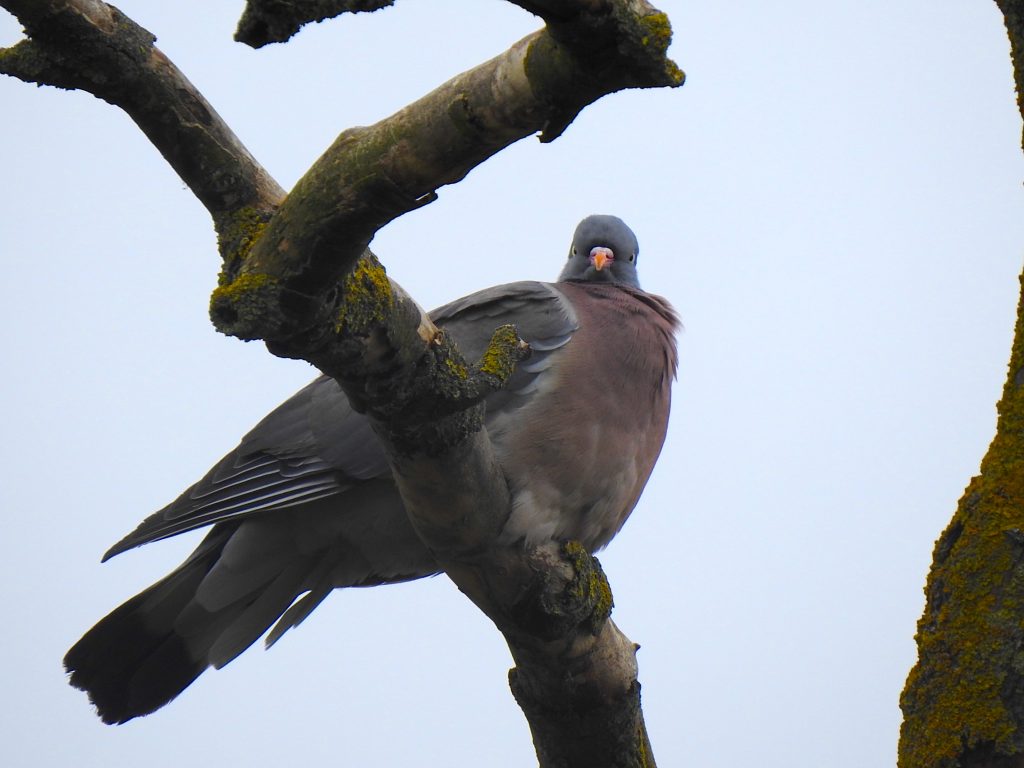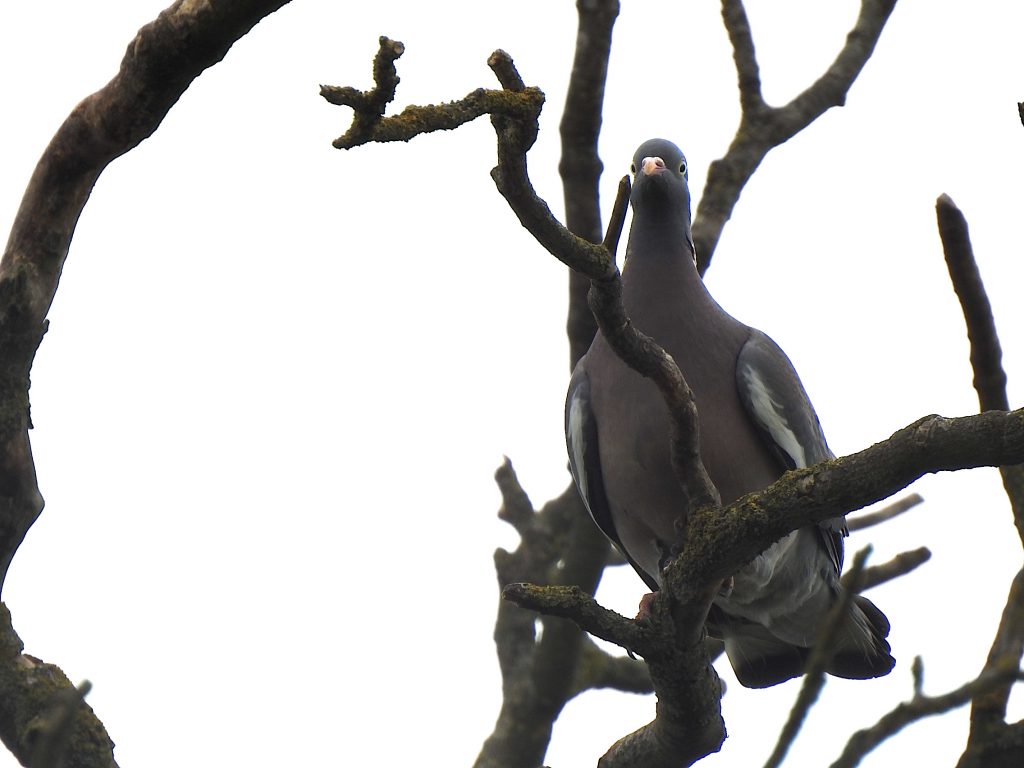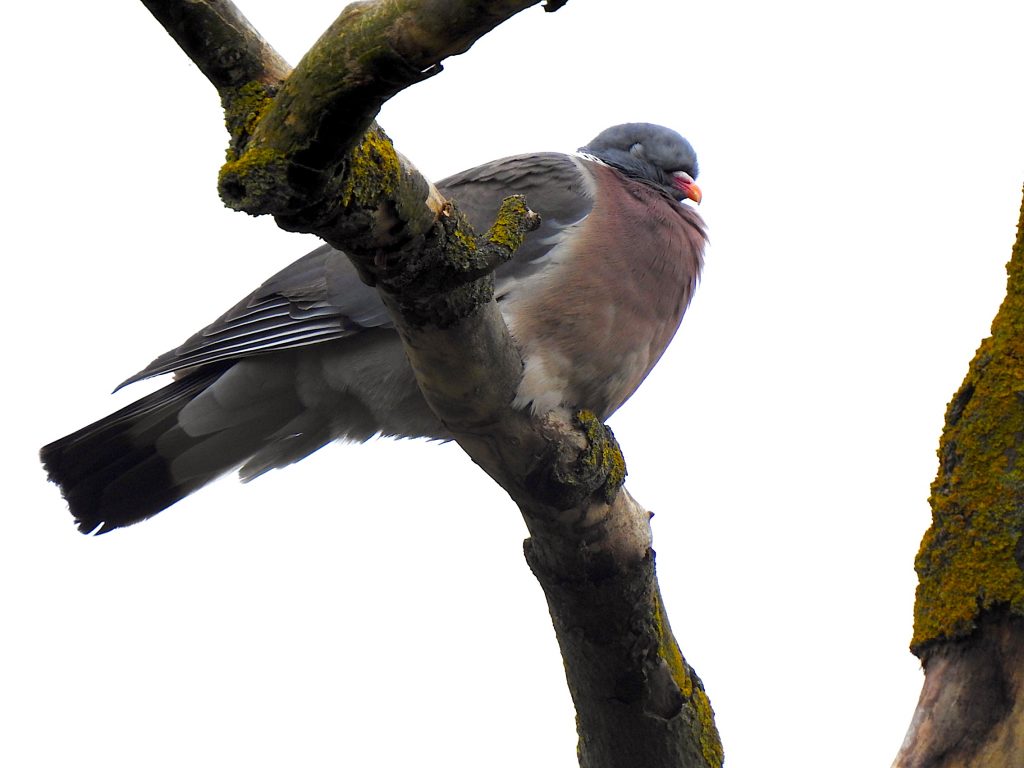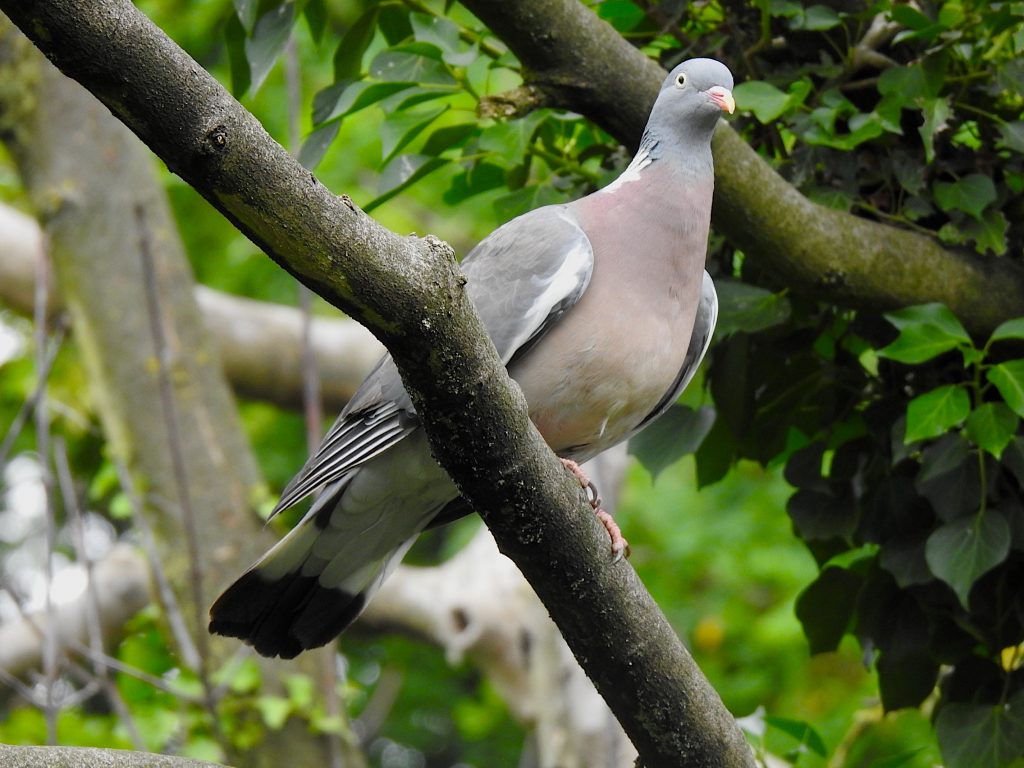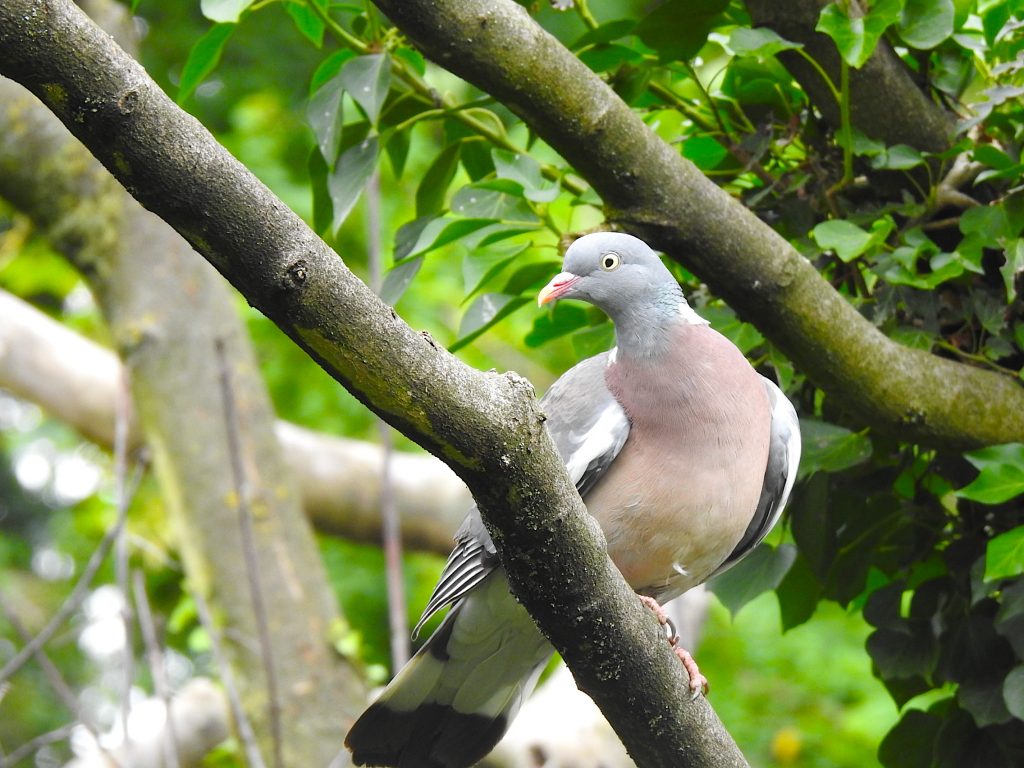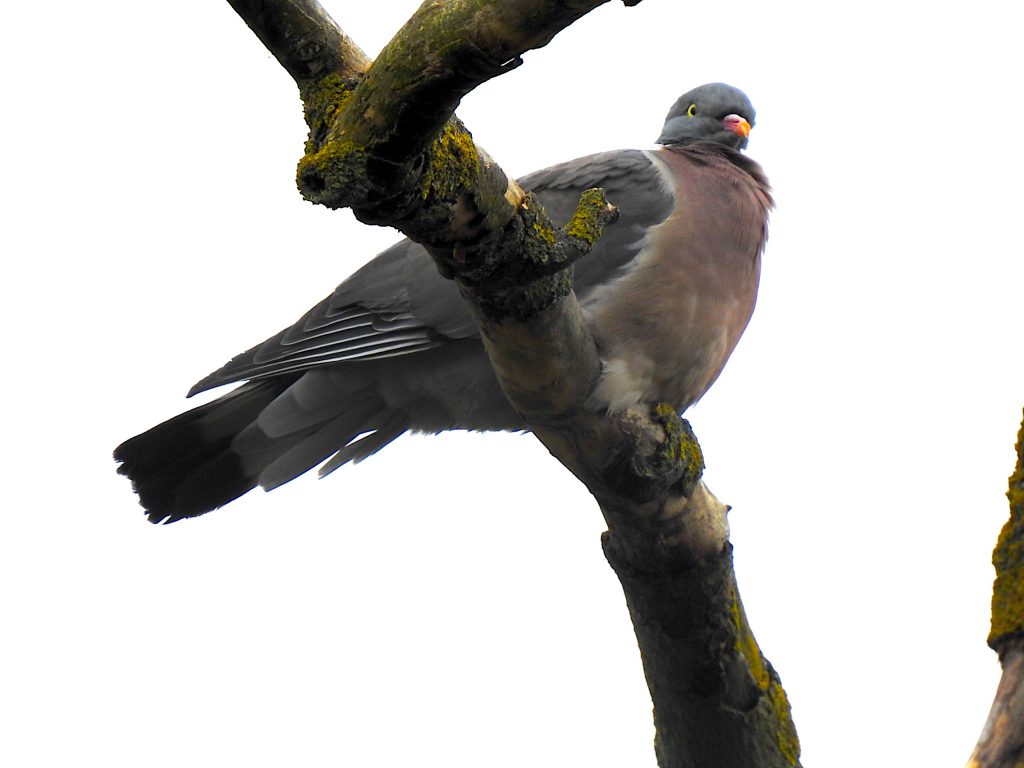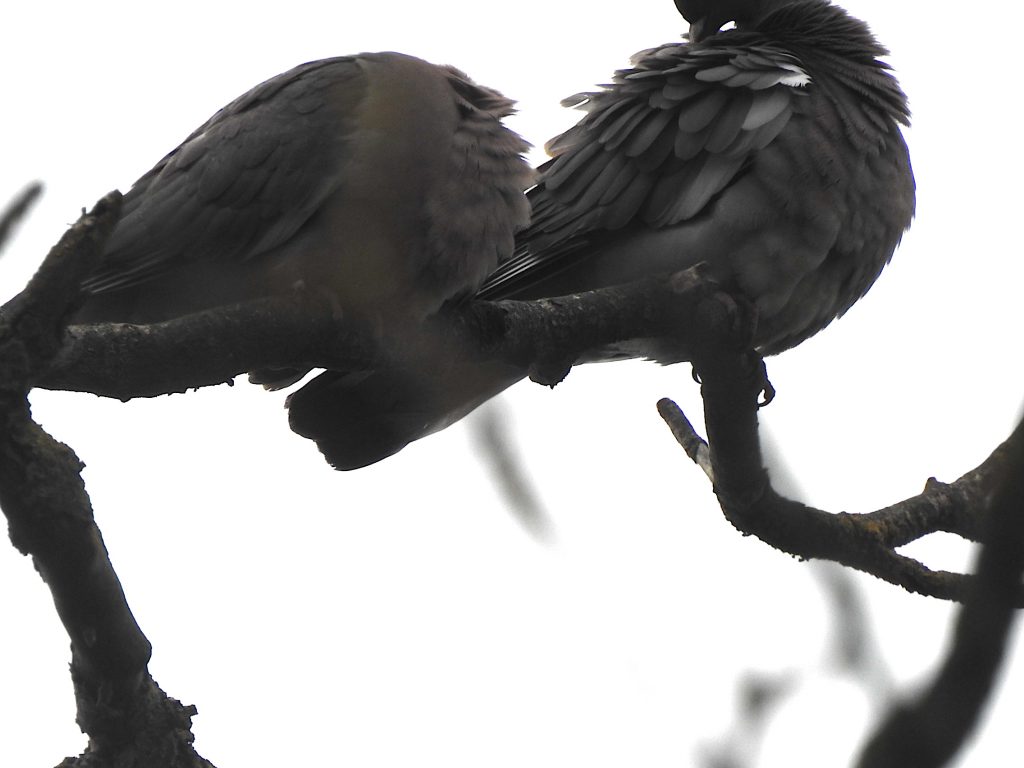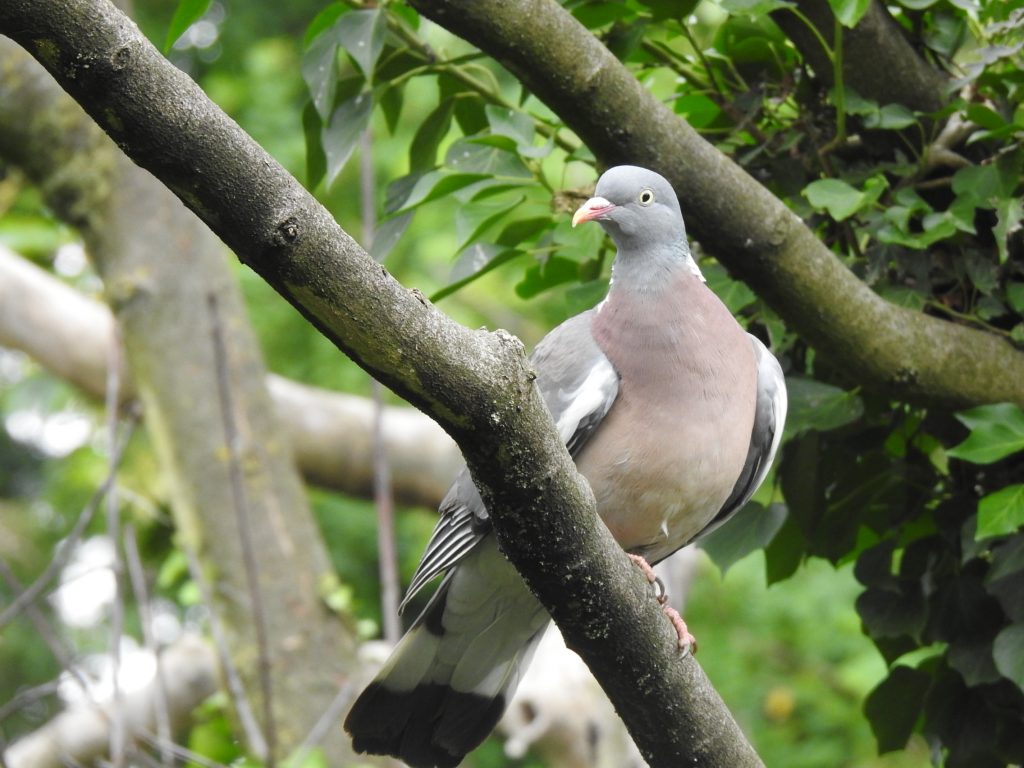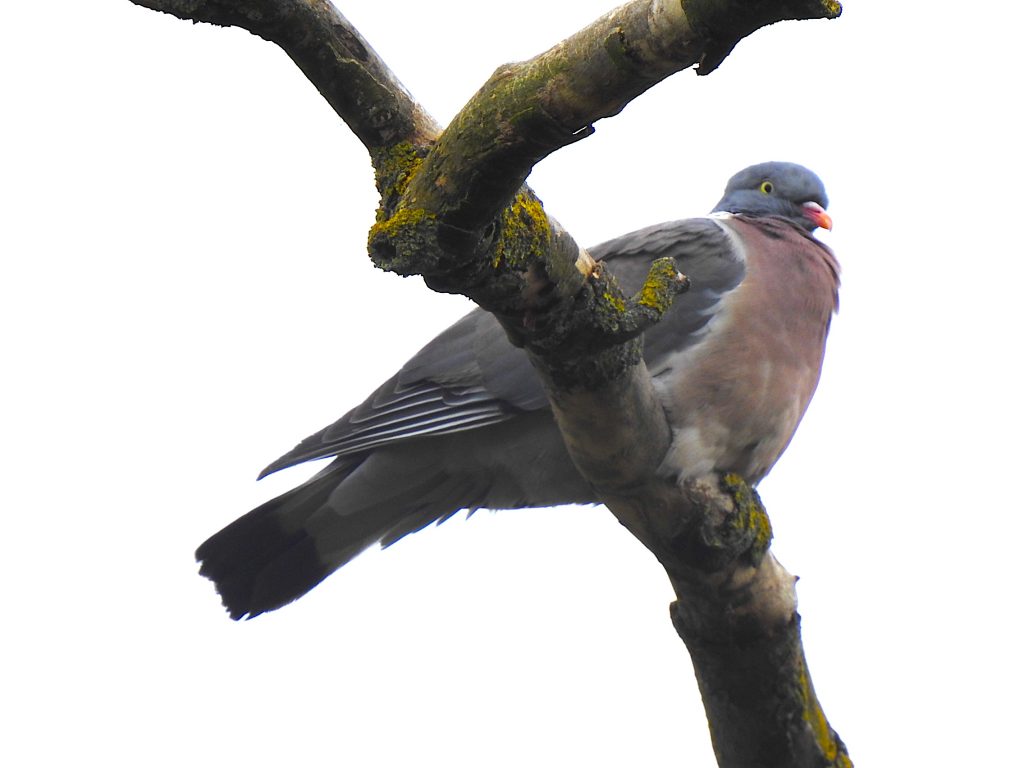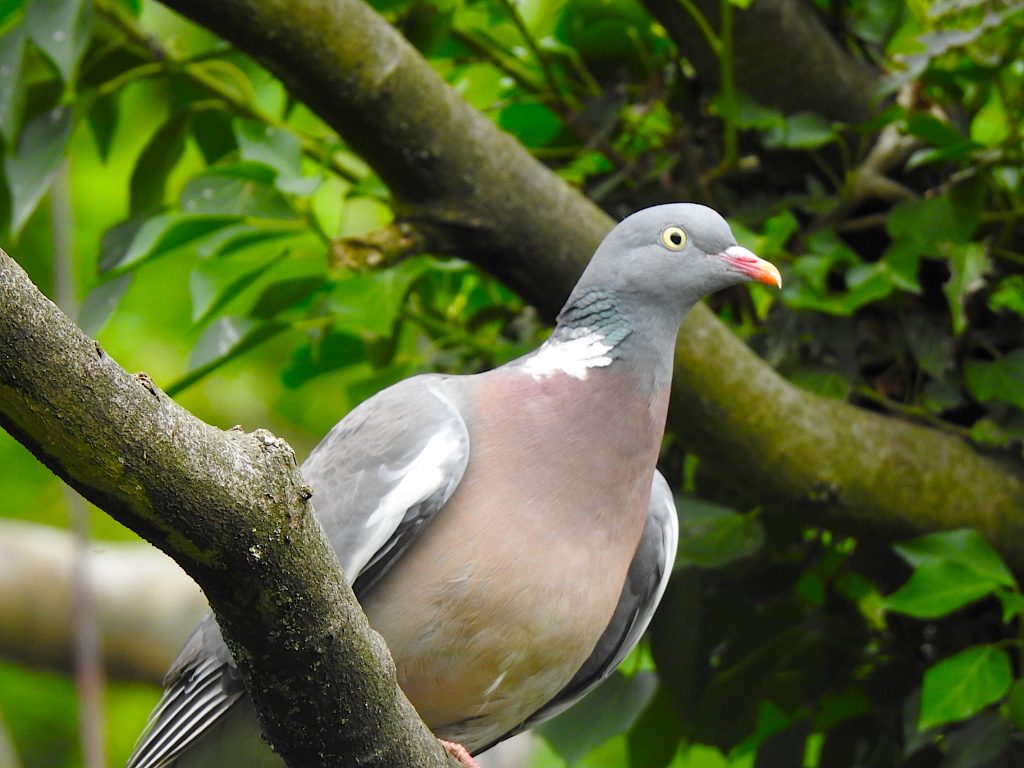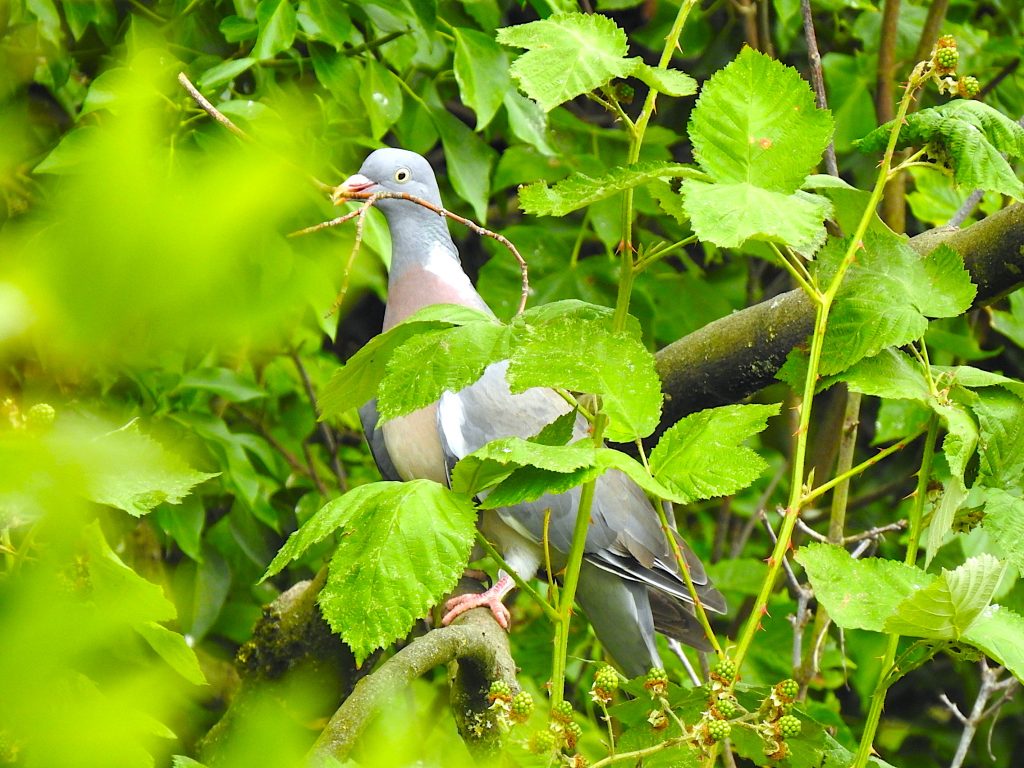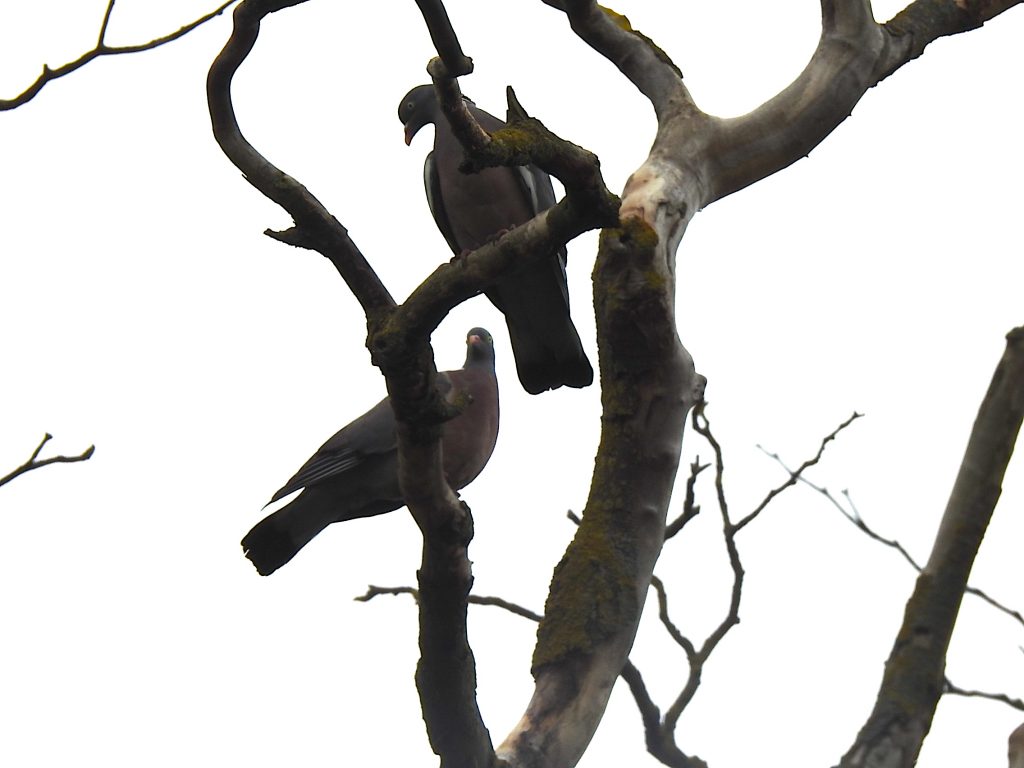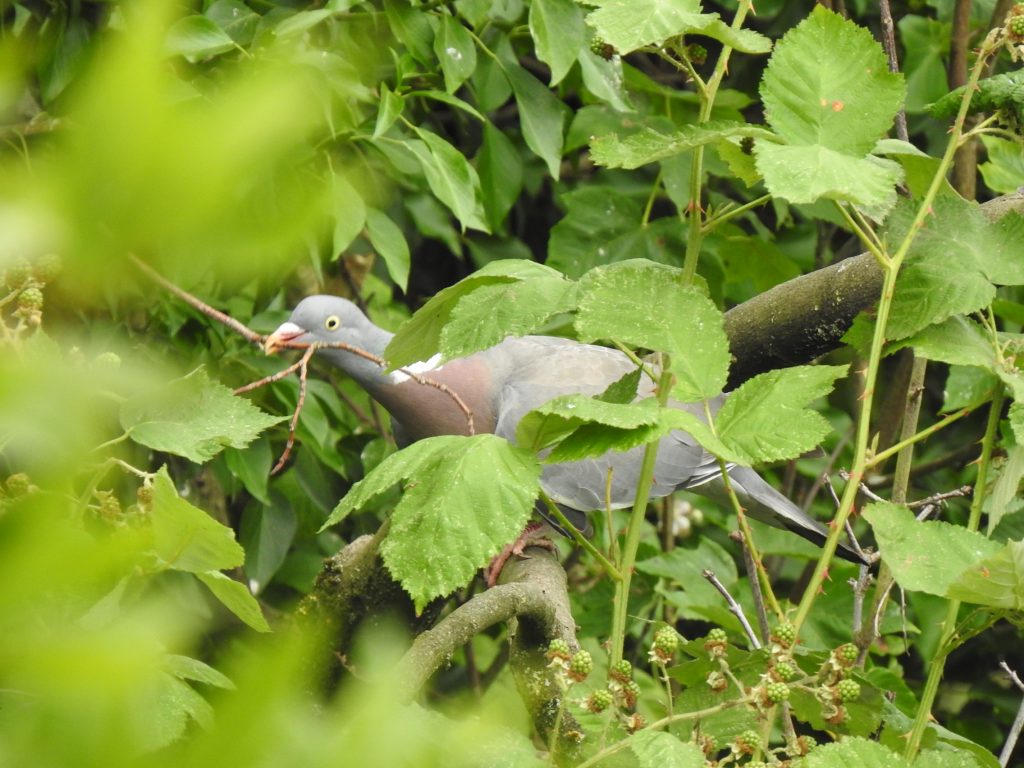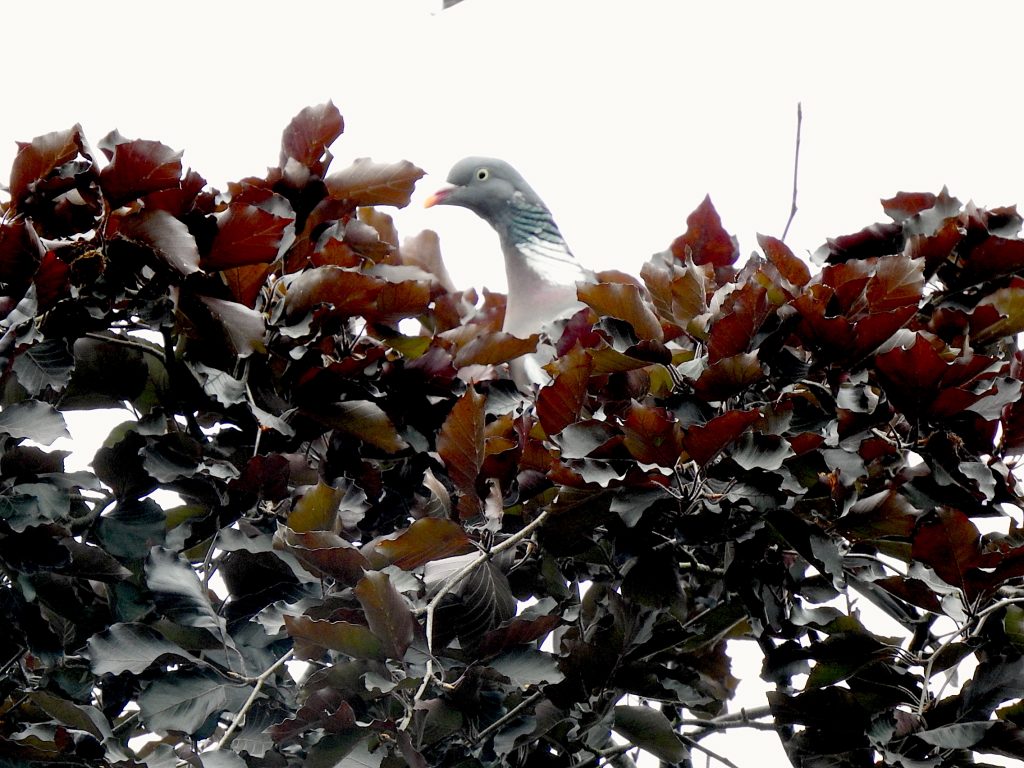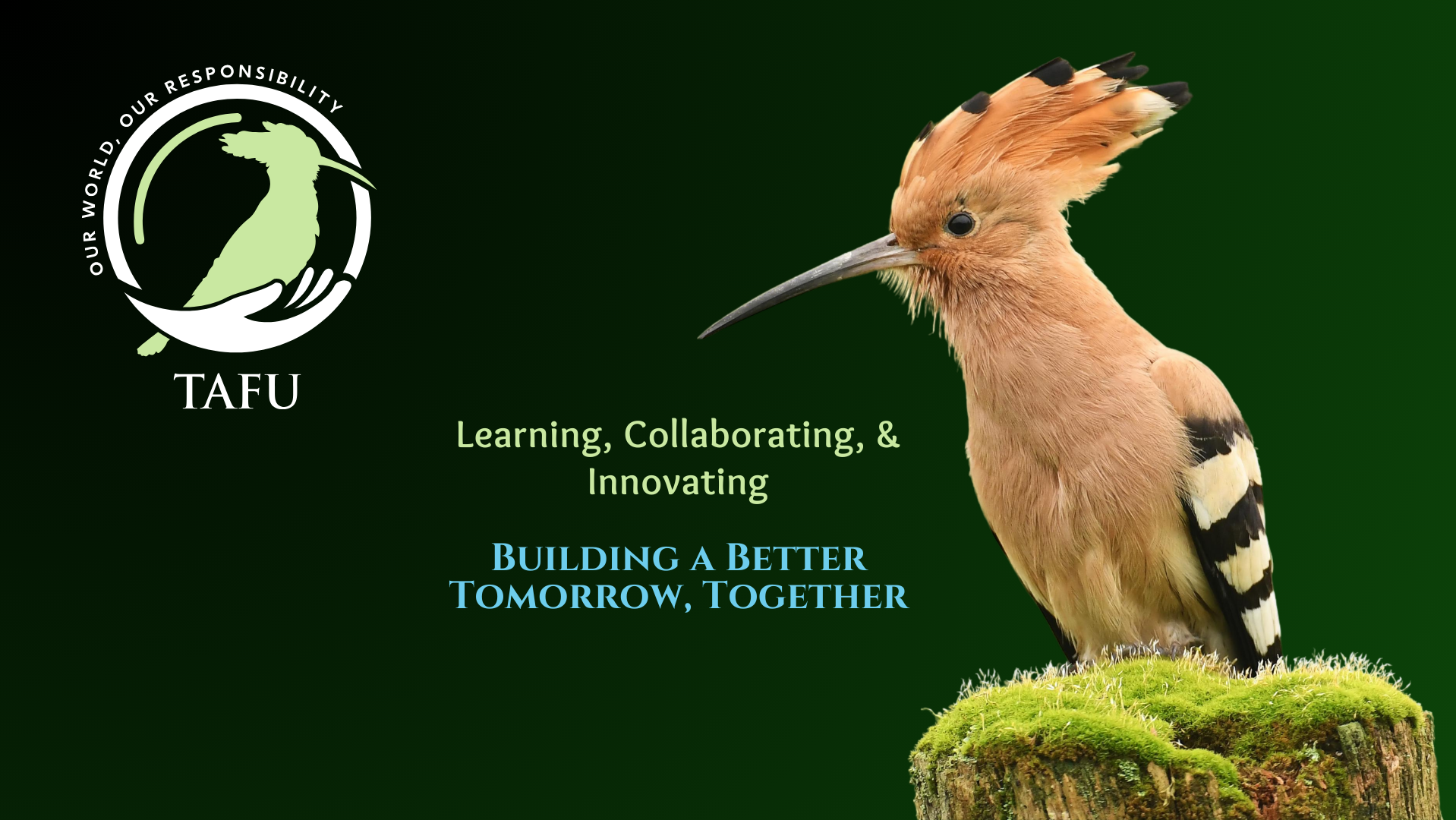The oddities of the common woodpigeon
Abstract
Woodpigeons are unique and beautiful animals that are highly adapted to their lifestyle and habitat, with features such as a crop that they use to store up to 155g of food before resting to digest it! Woodpigeons span all of Europe and parts of western Asia, with a population of 5 million breading pairs in the UK and weighing up to 600g, it is both the most common and the largest pigeon in the UK. Most woodpigeons breed for life and have very cute ways of strengthening their already strong bonds. Although woodpigeon numbers have been rising for quite some time, it is important we consider the reasons for their rise and whether this is having a positive or negative effect on their ecosystems.
Article
The common woodpigeon (Columba polumbus) a very common resident in my new garden and throughout the whole of the UK. Wood pigeons are the most common pigeon, with over 5 million breeding pairs in the UK, and the largest pigeon in the UK, weighing up to 600g. Common woodpigeons live in Northern and Eastern Europe as well as parts of Western Asia.
Woodpigeons were, and still are, commonly eaten through England, partly due to their large size and commonness, but also due to their dark and nutritious meat that comes from their wide diet. Woodpigeons are almost completely vegetarian and would eat almost any fruit or seed, with a strong preference to seeds and grains. Woodpigeons have a crop, a muscular pouch in their upper chest that is used to store food. Although the weight of food stored in their crop is about 70g, a mass of 155g has also been recorded! Due to this crop, woodpigeons need to spend a lot of time perched while digestion occurs. In order to digest such a large amount of food woodpigeons have another muscular organ called the gizzard that grinds down plant material from the crop. Woodpigeons even swallow small stones to aid digestion. Research has shown that they often swallow more stones if they eat more seeds, indicating that this is harder for them to digest.
As you can imagine, this diet is quite low in water and so woodpigeons have to drink a lot compared to other birds. Unlike most birds that use their beaks as a cup to pick up water and let it slide down, woodpigeons can use their beaks more like a straw and suck! Although the woodpigeon is not under any special protection, it is now illegal to kill them unless they pose a significant threat to crops.
Woodpigeons usually breed from February to November but stay in their breeding grounds throughout the year (so we have long-term residents!). Woodpigeons have quite set out mating ritual. Often, males pursue females on the ground and show off with their puffed-up neck and fan out their tails. This is accompanied by cooing sounds and the frequent bow of their necks (obviously in respect of the female!). They also fly up into the air and clap their wings before gliding down to the female. If he is successful, they will then begin to build a nest together. Woodpigeons are not always faithful, but a vast majority form strong bonds and mate for life. These bonds are reinforced by cuddling, kissing and cleaning of one another. Even if they don’t mate for life, woodpigeons stay faithful throughout the breading season.
Not all woodpigeon clutches are found in the breeding season, woodpigeons occasionally bread at any time of year. The main reason for this is what their young are fed. Adults regurgitate the crops they have eaten after they are partially digested and so is more of a liquid than a solid, therefore it is known as crop milk. This means that as long as the adult woodpigeons have a steady supply of food, so do the squabs (young pigeons). Clutches are incubated for 16 days before then being fed for 4 weeks. Woodpigeon eggs are plain white and quite large (4cm). Woodpigeon nests are quite simple and are predominantly composed of twigs. Female woodpigeons only lay 2 eggs per clutch however, these are quickly replaced if break or get eaten.
There are many reasons an egg might get destroyed, one of the main ones is us. In the past collecting wild bird eggs was a profession or even a hobby. The eggs of all types of birds, especially rare birds, were collected and could be sold either for food or as part of a collection. Some collections were, and still are, used for scientific research and so could help the bird population. However, if done excessively, egg collections can be detrimental to a bird species population and so to a whole ecosystem and food chain. Nowadays it is illegal to collect bird’s eggs without an official licence. If done, magistrates can give an unlimited fine or sentence up to 6 months imprisonment per egg. There are now many forms where you can report illegal activity and crimes against wild birds, so if you know of any please speak out. You can do so on the RSPB website.
Woodpigeons can live surprisingly long with an average lifespan between 3 and 5 year, yet the oldest recorded woodpigeon was over 17 years old! After fledging, at between 20 and 33 days old, they begin to survive on their own. Young woodpigeons, although have a striking resemblance to their parents, can still be identified by their lack of a white patch on their neck, which takes a few weeks to develop. At just 1 year old juveniles begin to breed and start the cycle again.
Woodpigeons create a very similar sound to doves. However, instead of producing three “coo” or “hoo” sounds, woodpigeons create five, with a short break between the first three and the last two.
The Latin name “Columba polumbus” is quite unique too. Columba is the Latin name for pigeon, but polumbus means diver. It is believed that this originates from the woodpigeon’s mode of flight. While in flight, woodpigeons move their winds in a very similar way to how seagull’s (and other birds) swim!
Although woodpigeons seem quite well off, it doesn’t mean that they will be forever. Changes in human trends, such as the increase in intensive farming over the winter have caused woodpigeons to have a steady supply of food throughout the year. Due to their likelihood to eat crops, populations of woodpigeons in certain areas may decline as they are allowed to be culled if they damage crops or livestock and so it is important to also take into consideration the regional variations in their populations and what this may mean.
Despite this being good for the woodpigeons and their populations rising, it may indicate an imbalance that we are creating. It is highly important that we always consider both sides of any population rise.
However, his increase in population has also benefited the sparrowhawks. Sparrowhawks are adapted to catching birds in confined spaces such as dense woodland, and so woodpigeons are the perfect prey. Due to their large size their mobility and stealth is considerably lower than other, smaller birds. The fact that they nest in forests also means that they are in the sparrowhawks hunting ground. Although sparrowhawks are in decline, the rise in woodpigeon population could be part of their comeback!
Woodpigeons are well adapted to their lifestyle and habitat and there is just so much to learn about them, so please don’t think of them as a pest. We are lucky to have them in our gardens and parks as they hardly go further than Europe.
This article is to mark TAFU’s Local WIldlife Day. It is crucial to emphasise the significance of appreciating our local wildlife. Often overlooked, woodpigeons serve as vital contributors to their respective ecosystems and posses a distinctive beauty that warrants our admiration. On this special occasion, let us join together in celebrating Local Wildlife Day by cultivating a deeper appreciation for the diverse wildlife that surrounds us, and by delving into the wonders and peculiarities that make them truly remarkable. By fostering a greater understanding and admiration for our local wildlife, we can nurture a stronger connection to nature and actively contribute to the preservation of these precious ecosystems. So let’s all celebrate LWD by appreciating the wildlife around us; and start learning about it. I am taking you into world of woodpigeons’ beauty and their oddities to begin with!
Nika Strok Underwood
